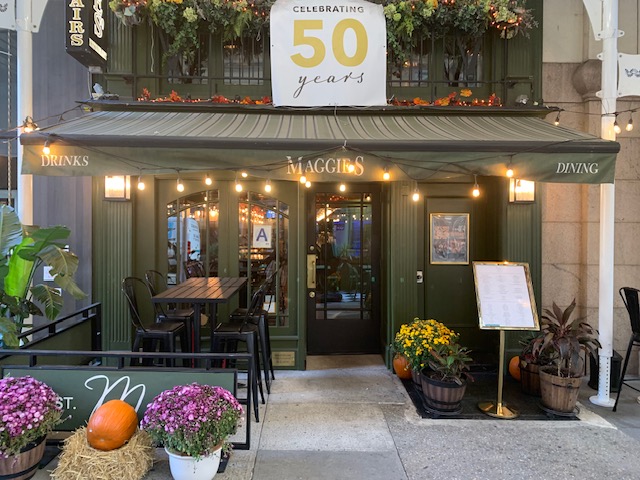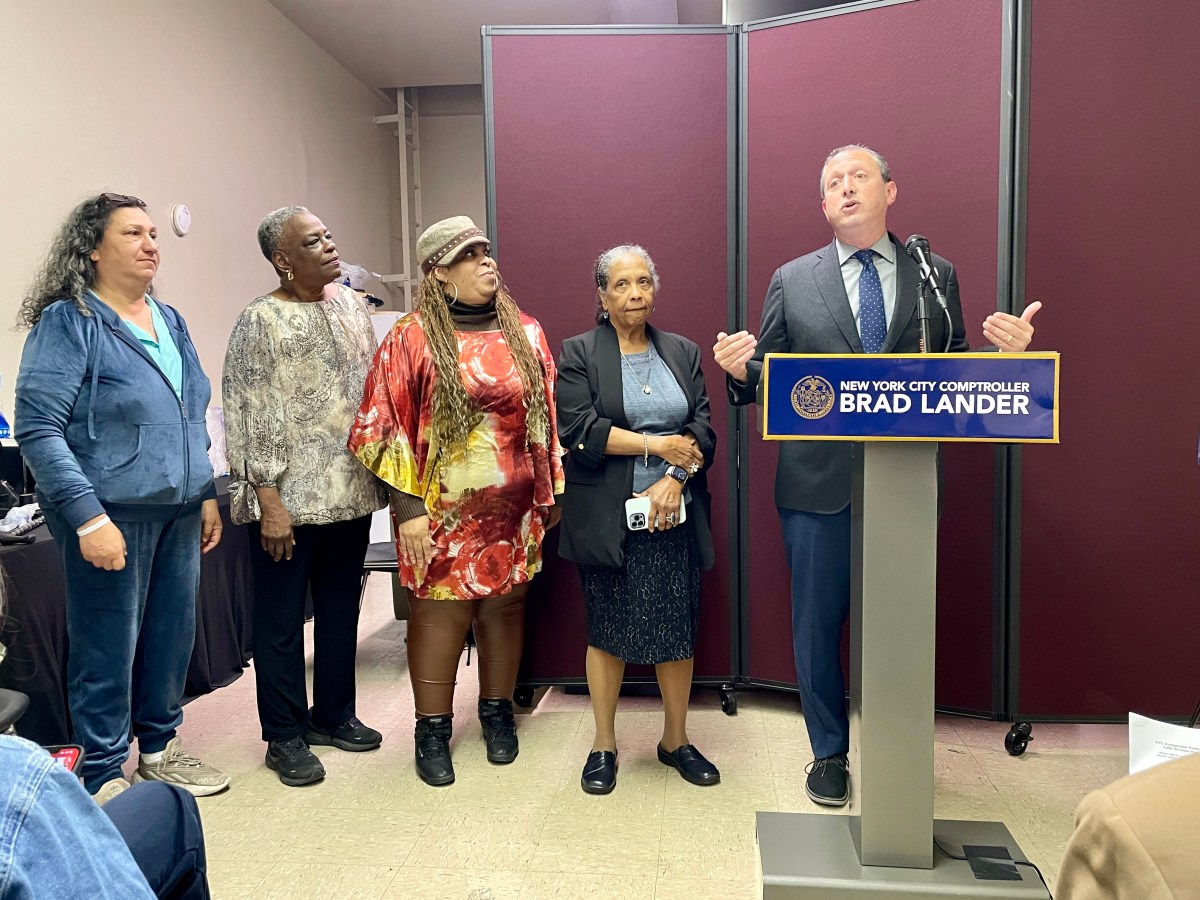By Albert Amateau
Tenants of Knickerbocker Village on the Lower East Side are rejoicing about a court decision last week they hope will keep the complex affordable.
State Supreme Court Judge Walter B. Tolub ruled Aug. 31 that the state Division of Housing and Community Renewal was wrong to approve the owners application to withdraw the 12-building complex from a 1934 state low-income housing program and transfer it to private ownership.
Even though D.H.C.R. and the owner of the property, Knickerbocker Village, Inc., have vowed to appeal the decision by Tolub, tenants this week celebrated their victory.
“I feel great. We’ve put a lot of work into this,” said Richard Cancell, a tenant for the past 30 years in the 1,590-apartment complex bounded by Monroe, Market, Cherry and Catherine Sts. between the ramps of the Brooklyn and Manhattan Bridges. Despite the certainty of an appeal, Cancell said, “I feel we’re going to win all the way wherever the case goes.”
“I’m completely elated – we won,” said Lisa Wolf, another tenant.
The landlord vowed to continue the fight. “Everyone has understood from the beginning that this case would go to appeal whoever won,” said Vincent Callegy, manager of the complex and a spokesperson for the owner.
The tenants, 60 percent of whom are Chinese, have been at odds with the owners since 2003 over the issue of leaving the state low-income housing program known as Article IV, which predates the Mitchell-Lama program.
Knickerbocker Village, Inc. had applied for permission from D.H.C.R. to voluntarily dissolve and transfer the property to Cherry Green Corp. a new version of itself that would operate the complex without Article IV supervision and rent limits
D.H.C.R. Commissioner Judith Calogero issued a consent in January 2006, imposing the condition that existing tenants would be in the Rent Stabilization program and that the ownership be transferred to a company that would run the complex outside the Article IV program. Tenants fought a move to Rent Stabilization because it would have left them vulnerable to substantial rent increases.
Judge Tolub said in his decision that while D.H.C.R. has the authority under Article IV to dissolve the ownership corporation, “that does not mean that the D.H.C.R. may transfer the property to whomever it pleases.” Tolub said the agency lacks the authority to transfer the property “to anyone other than to a municipality or to another limited dividend company.”
Knickerbocker Village is designated by the state as a NORC (Naturally Occurring Retirement Community) because over the years its tenant population has become overwhelmingly over the age of 65.
While the D.H.C.R. had said that existing Knickerbocker tenants would be protected under the Rent Stabilization program if the complex left the Article IV program, tenants insisted the Article IV protection could not legally be eliminated.
Tenants filed the suit to overturn the decision despite the provision that rents for existing tenants be regulated under Rent Stabilization. “We feel that Article IV is much better that Rent Stabilization,” said Jacques Rose, lawyer for the tenants.
Moreover, in a separate matter, tenants are fighting the owner’s application for permission to raise rents despite $5 million that the Lower Manhattan Development Corp. granted to the owner last year to keep rents low.
The rent issue is pending a decision by D.H.C.R. The owner had originally asked for a rent increase of $29 per room per month but after the L.M.D.C. grant reduced its rent increase proposal to $12 per room per month, which would translate to a $42 per month increase for many tenants.
The tenants contend that even the smaller rent increase request is based on proposed capital improvements that are not needed.
Bob Wilson, who came to Knickerbocker Village as a child with his parents in 1944, said that the fight to prevent the owners from taking the complex out of the Article IV program was more important than the rent issue because it involved the future of the complex as a low-income housing. He has estimated the rents would triple under Rent Stabilization.
Article IV is especially important for affordable housing since the owners of residential projects built and operated under the Mitchell-Lama program have been leaving the program, Wilson noted.
The original state law financing low-income housing was enacted in 1926 when Al Smith was governor and Knickerbocker Village was financed under that law eight years later. In the 1960s when the state Mitchell-Lama program was enacted, the New York State Legislature consolidated housing assistance programs in the Private Housing Finance Law. Mitchell-Lana was Article II of the new law and the program that financed Knickerbocker Village and a few other projects during the Depression became Article 4.
Rents at Knickerbockers Village under Article IV average $189 per room per month and most apartments are three and a half rooms. Annual income for new tenants many not exceed seven times the annual rent of the apartment. Existing tenants whose income has risen above the limit pay a rent surcharge equal to the percentage of their income in excess of the limit.
It’s not the first recent ruling by Judge Tolub hailed by Downtown residents. He has been skeptical of the security measures around the New York Stock Exchange and One Police Plaza. He ordered an environmental study for the Park Row area and accused police of acting like an occupation force in Chinatown.
Albert@DowntownExpress.com





























